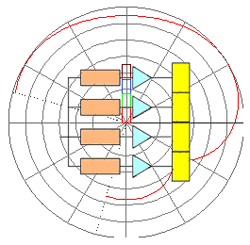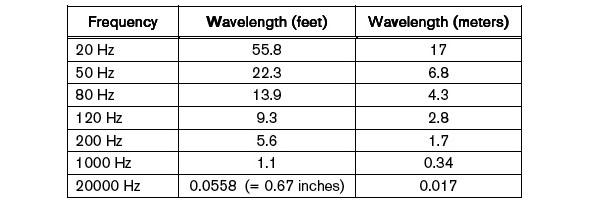In sound systems, it would be terrific if loudspeakers worked like spotlights: find the loudspeaker boxes with the right directional patterns, aim them where you want sound to go, and you’re done. Of course, that’s not the way it works, especially for bass.
Ordinary bass loudspeakers are very nearly omnidirectional over their working ranges, but when you stack up a few of them, the pattern becomes more directional and more complex. Imagine if lights worked that way—a bare light bulb would illuminate the whole room, but four of them in a row would only light up some parts of it.
To make things worse, when you use multiple woofer stacks—stage left and stage right, for example—it produces wave interference (also called “comb filtering”), causing peaks and nulls in different places in the room at different frequencies. If light worked that way, then when you lit up a room with two white lights spaced some distance apart, the room would be illuminated with a rainbow of different colors.
Even beyond that, there’s the problem of reverberation, which adds its own kinds of confusion and coloration in the time dimension. That effect that doesn’t even have a parallel in lighting.
In the face of all these phenomena, how do audio professionals design subwoofer arrays and drive schemes that provide required qualities of coverage and fidelity?
If we succeed, then:
• The bass will be clear and will have constant tonal balance over the entire listening area.
• The bass sound level will be in correct balance with the midrange and high-frequency over the entire listening area.
• Negative effects of reverberation and reflection will be minimized.
• Efficiency of the equipment (sound power output per unit cost) will be maximized.
This article offers concepts and techniques for getting good bass. Our focus will be the frequency range from approximately 20 Hz to 150 Hz.
Wavelength
Just about everything having to do with loudspeaker array acoustics is relative to wavelength. A box or array is “large” if its dimensions—or some of its dimensions—are more than about 1.5 wavelengths across. A dimension is “small” if its dimensions are less than about a third of a wavelength.
Here are some typical wavelengths:
For normal air temperature, pressure, and humidity, the formulas for wavelength are:

















